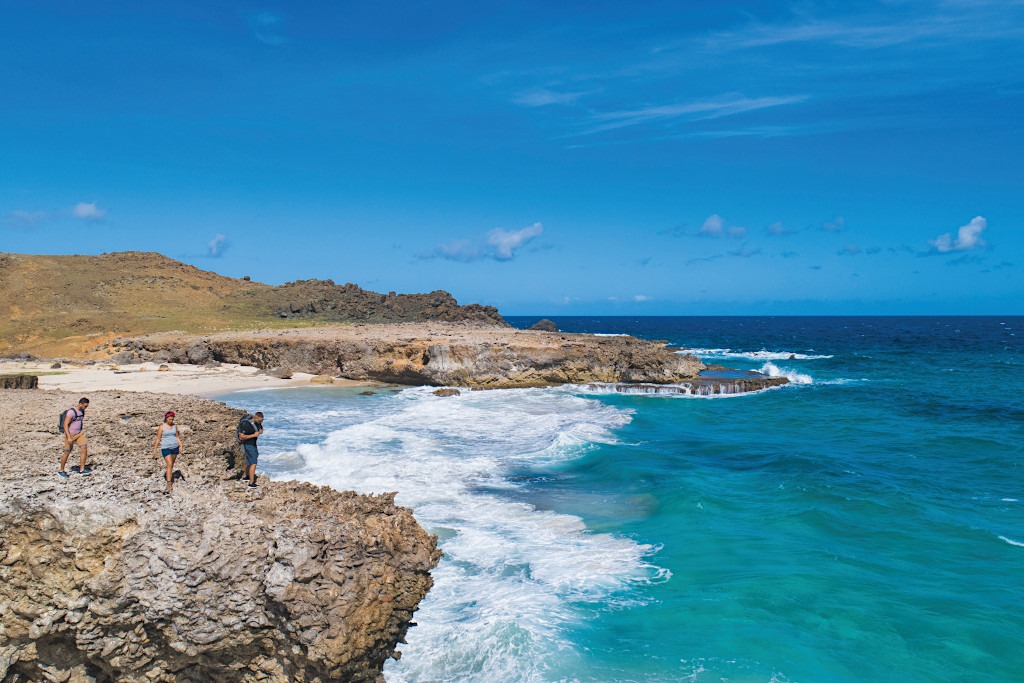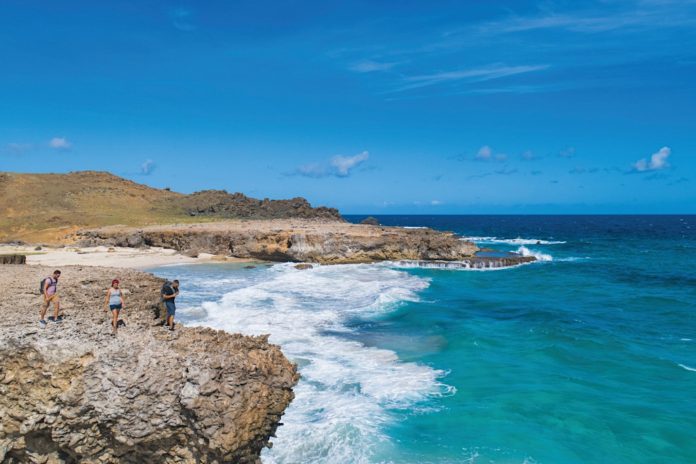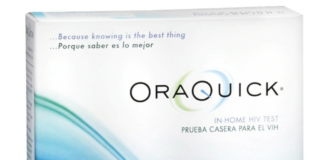I went to Aruba for one reason: ‘Kokomo’ by The Beach Boys. The island (and the song) seemed to be the very definition of a tropical escape. I figured that Aruba would be full of palm trees, resorts, beaches, and…well, really, that’s all I thought Aruba was. To me, it would be just like Florida, filled with Americans at a Margaritaville that played Jimmy Buffet ‘til 2 A.M. In reality, Aruba is nothing like what I thought. The island remains relatively untouched and is filled with surprises.
As the plane landed, I was already excited beyond belief. Out my window, I could see the ocean waves gently washing onto shore, emerald palms dancing in the tradewinds, and the bright tropical sun glowing down. A short drive from the airport was my hotel, the Manchebo Beach Resort (J.E. Irausquin Blvd 55, Oranjestad, Tel: +297 582 3444. www.manchebo.com).
After cleaning up, I went to Manchebo’s beachside pavilion for something to eat. There were people sitting at the bar and nearby cabanas with drinks in-hand and plates of food being shared. I ordered flash-fried croquettes made of freshly caught fish mixed with herbs, spices, and breading.

Hiking in Arikok National
This was also when I met my true culinary love, Aruba’s very own Hot Delight papaya hot sauce. This relatively mild and sweet hot sauce adds a little bit of heaven to whatever you’re eating. It will be found in every single restaurant on the island and everyone will be using it. Who knew that a small island with a population of about 112,000 made one of the best hot sauces on this planet?
Later that night I met up with Aruban artist Naomi Landgraf, who took me to a restaurant called Papiamento (Washington 61, Noord. Tel: +297 586 4544. www.papiamentoaruba.com). Papiamento is the name of the native Aruban language before the Dutch colonized the ABC islands (Aruba, Bonaire, Curaçao) and implemented Dutch as the main language. Papiamento (the restaurant), is built into a 126-year-old cunucu house. These were the traditional homes of Aruba before modern building materials began being used. This is also part of the reason why Naomi brought me here. Her art is making miniature versions of Aruba’s cunucu houses and telling the histories that go along with them.







